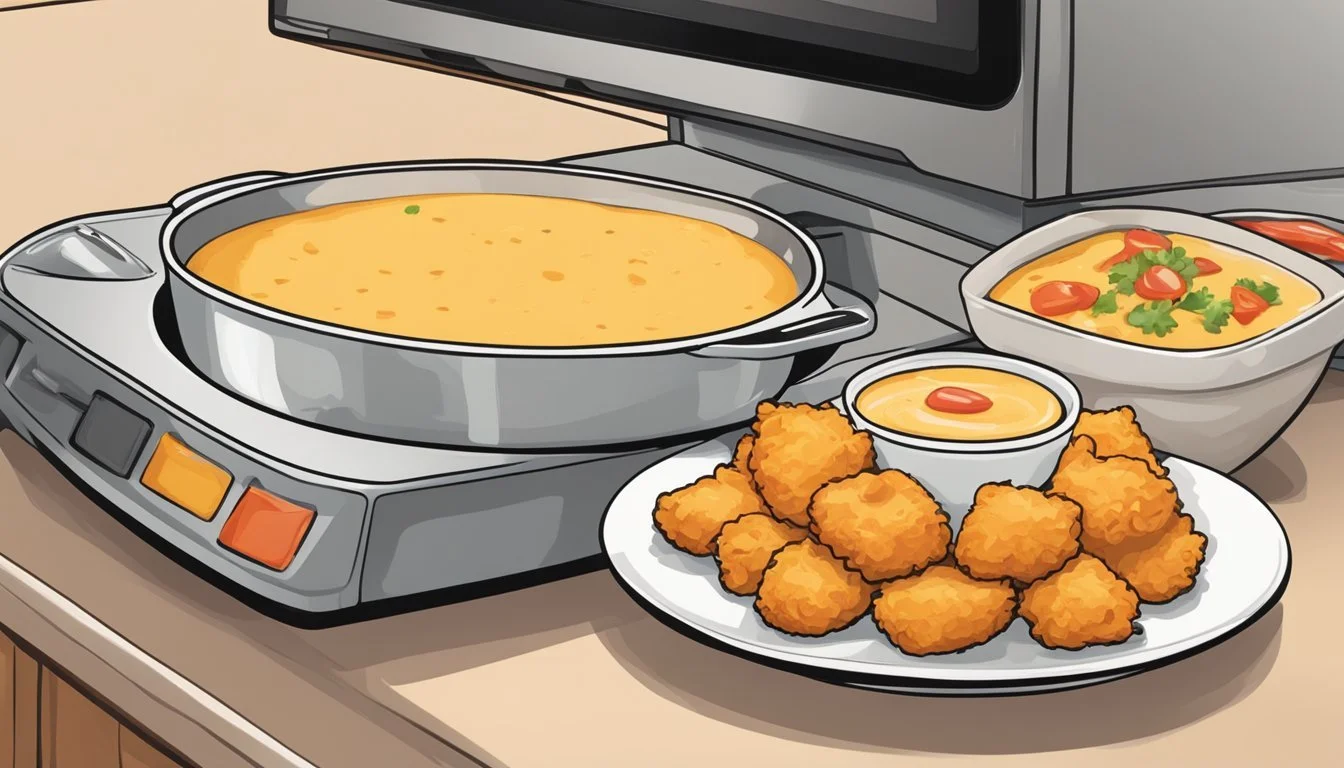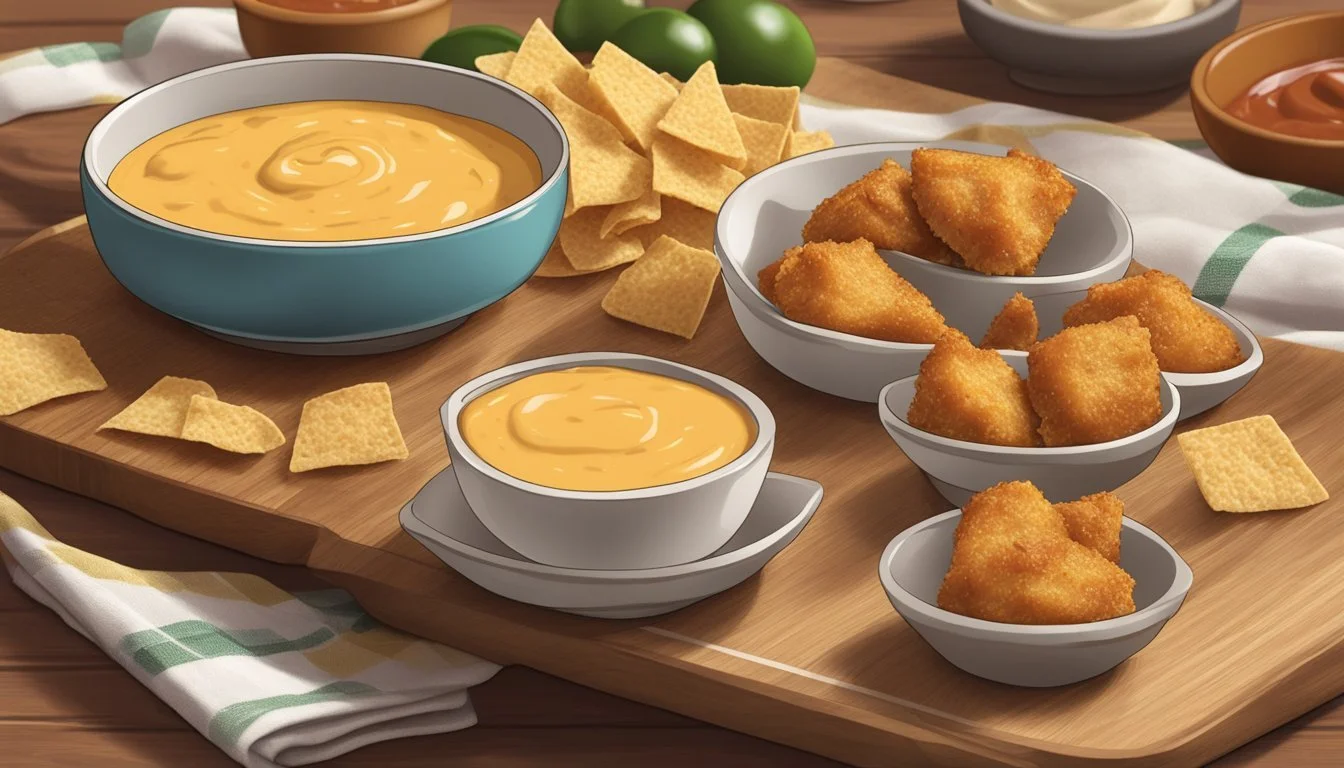How Long Do Chicken Queso Bites Last?
Safe Storage Tips
Trying to figure out how long chicken queso bites last can be crucial for anyone who enjoys making and storing these delicious snacks. Whether you prepared them for a game day gathering or as a quick appetizer for family dinners, understanding their shelf life ensures you enjoy them safely and at their best flavor.
Chicken queso bites, when stored properly in an airtight container, can last in the refrigerator for up to 3 to 4 days. For longer storage, freezing them is a good option. They can be kept in the freezer for up to 2 months without losing too much of their quality.
This knowledge doesn’t just keep your food from spoiling; it helps you plan your meals effectively. Knowing the shelf life of chicken queso bites means you can prevent waste and savor these tasty treats whenever you want.
Understanding Chicken Queso Bites
Chicken queso bites are a popular snack, valued for their savory combination of chicken, melted cheese, and seasonings. They can be made using different recipes and ingredients, affecting their flavor and texture.
Ingredients and Preparation
Chicken queso bites typically include chicken, queso, and a variety of seasonings. Chicken is often used as the primary protein, either cooked and shredded or ground. Queso, a type of melted cheese, varies between Mexican queso and American cheese. Common seasonings include cumin, paprika, and garlic.
Ingredients List
Chicken thighs or breasts
Queso (Mexican cheese or American cheese)
Spices: cumin, paprika, garlic powder
Milk and eggs (for binding)
Optional: rice, beans, jalapeños
Preparation involves mixing cooked chicken with queso and seasonings, then shaping into bite-sized pieces. The mixture is bound with eggs and milk before baking.
Characteristics of Chicken Queso Bites
Chicken queso bites are distinguished by their savory flavor and soft texture. Chicken provides a tender bite, while the queso offers a creamy, melted richness. Seasonings add depth to the flavor profile.
These bites are usually golden brown on the outside, with a firm exterior and a gooey interior. The use of different cheeses, such as Mexican queso or American cheese, can influence their taste and texture. Consistency can also vary based on the exact combination of ingredients and cooking method.
Types: Homemade vs. Store-Bought
Homemade chicken queso bites allow cooks to control the quality of ingredients and flavor profile. Homemade queso often features fresher materials, and the recipe can be tailored to individual preferences. Preparing them at home also means fewer preservatives and additives.
Store-bought chicken queso bites offer convenience but may contain preservatives to prolong shelf life. These pre-made bites are typically found in the freezer section and may have a different texture due to processing and packaging. The shelf life of store-bought varieties is generally longer than homemade ones, making them suitable for quick snacks without immediate preparation.
For those who prioritize control over ingredients, homemade bites are preferable. For convenience, store-bought options are more practical, offering ease of preparation.
Storing Chicken Queso Bites
Chicken queso bites can be stored safely in a few different ways, whether you're looking to keep them fresh for a few days or a few months. Proper storage methods ensure that they maintain their quality and taste.
Immediate Storage After Cooking
After cooking, chicken queso bites should cool down to room temperature. Once they have cooled, place them in an airtight container to prevent exposure to air and moisture. Plastic wrap can also be used to wrap individual bites before placing them in the container. Label the container with the date to keep track of freshness.
Refrigerator Storage Tips
When storing in the refrigerator, place the chicken queso bites in an airtight container. This helps prevent them from absorbing odors from other foods. It's important to consume refrigerated bites within 3-5 days to ensure they remain safe to eat. To reheat, microwave them or use an oven at low heat for better texture.
Freezer Storage Solutions
For longer storage, the freezer is the best option. Lay the chicken queso bites in a single layer on a baking sheet covered with parchment paper. Freeze them for 1-2 hours until they are firm before transferring them to a freezer-safe airtight container or a heavy-duty plastic freezer bag. Label with the date and consume within 2 months for optimal taste and quality.
By following these storage methods, you can enjoy chicken queso bites that taste fresh and flavorful whether they're stored for a few days or a few months.
Shelf Life and Freshness
Chicken queso bites have varying shelf lives depending on storage conditions, which significantly impact their freshness and overall quality.
At Room Temperature
Chicken queso bites should not be left at room temperature for more than two hours. After this period, the risk of bacterial growth increases significantly, greatly affecting both quality and safety.
If the ambient temperature exceeds 90 degrees Fahrenheit (32 degrees Celsius), this time should be reduced to one hour. It is crucial to transfer them to the refrigerator promptly to avoid food poisoning risks.
In the Refrigerator
When stored in the refrigerator, chicken queso bites remain fresh for up to 3-5 days. They should be kept in an airtight container to prevent moisture loss and contamination from other foods.
Labeling the container with the date helps monitor their freshness and prevent food waste. Maintaining a consistent temperature below 40 degrees Fahrenheit (4 degrees Celsius) is essential.
After Freezing and Thawing
Freezing chicken queso bites can extend their shelf life to about 1-2 months. To preserve quality, place them in a freezer-safe, airtight container or wrap them tightly in aluminum foil or plastic wrap.
When ready to eat, thaw the bites in the refrigerator overnight rather than at room temperature. After thawing, consume within 2-3 days and do not refreeze to maintain texture and taste.
Identifying Spoilage
Knowing when chicken queso bites have gone bad is crucial to avoid foodborne illnesses. Key indicators include changes in appearance, smell, and texture.
Visual and Olfactory Signs
Spoiled chicken queso bites exhibit clear visual signs. Look for mold growth or any discoloration, such as spots or a dulling of the original color. The presence of slime or an unusually shiny surface indicates bacterial growth.
The smell is another strong indicator. Off smells such as sour, ammonia-like, or rancid odors clearly signal spoilage. If the bites emit anything other than their typical cheesy aroma, it is safest to dispose of them.
Texture and Taste Changes
Texture changes are noticeable when chicken queso bites are no longer fresh. Spoiled bites may feel slimy, sticky, or overly soft. An overly dense or rubbery texture can also be a sign of spoilage.
The taste can also change distinctly. Spoiled food may taste sour, bitter, or just generally off from its usual flavor. If unsure about their freshness, it's better not to taste; noticeable changes in texture and smell are significant signs.
Reheating and Serving
To ensure chicken queso bites are both safe to eat and delicious, follow careful reheating practices and focus on retaining their quality.
Safe Reheating Practices
For safe consumption, always store chicken queso bites in the refrigerator if they are not immediately served. Use a microwave, stovetop, or oven for reheating.
Microwave: Place the bites in a microwave-safe dish and cover with a damp paper towel. Microwave on medium power (50%) in 30-second intervals, stirring between intervals, to ensure even warming.
Oven: Preheat the oven to 350°F. Arrange bites on a baking sheet with space between each. Cover with aluminum foil to prevent dryness and bake for 10-15 minutes, checking periodically.
Stovetop: Heat a non-stick pan over medium heat. Add a tablespoon of water or chicken stock to create steam, cover the pan with a lid, and heat for about 5-7 minutes, turning occasionally.
These methods minimize the risk of bacterial growth while retaining the dish's integrity.
Quality Retention During Reheating
Maintaining the texture and flavor of chicken queso bites requires careful handling during reheating.
Microwave: Stirring between intervals avoids hotspots and ensures the cheese dip remains creamy. Adding a tablespoon of milk or water can help keep the queso dip from thickening too much.
Oven: Using aluminum foil helps lock in moisture, preserving both the chicken's tenderness and the queso dip's smooth consistency.
Stovetop: Steaming with a small amount of liquid creates a gentle reheating environment, preventing the bites from drying out while ensuring the cheese dip remains melty.
Careful attention to reheating ensures appetizers stay flavorful and appealing, making them perfect for any host looking to impress at parties.
Preventive Measures and Best Practices
To ensure the longevity and safety of chicken queso bites, it is critical to employ meticulous food handling practices and diligent tracking methods.
Proper Food Handling
Proper food handling is essential to prevent foodborne illness. When preparing chicken queso bites, individuals should wash their hands thoroughly with water and soap before and after handling raw chicken. Use separate cutting boards for poultry and vegetables to avoid cross-contamination.
Store the prepared bites in an airtight container or plastic bag to maintain freshness. It is important to refrigerate leftovers promptly, ideally within two hours, to minimize bacterial growth. When reheating, ensure the bites reach an internal temperature of 165°F to ensure safety.
Labeling and Date Tracking
Labeling and date tracking are fundamental practices for keeping track of food freshness. Clearly label any stored chicken queso bites with the preparation date. This helps in monitoring the time spent in the refrigerator.
Dairy components in queso can spoil quickly. To ensure safety, consume the bites within 3-5 days. Regular inspection for signs of spoilage, like an off smell or mold, is important. Maintain a first-in, first-out system to use older batches first, reducing waste and ensuring quality.
Understanding Expiration Terms
When discussing perishable foods like chicken queso bites, it's essential to understand various expiration terms.
Expiration Date: This is the last date a product should be consumed. Food eaten after this date may pose health risks.
Best-By Date: Indicates when the product will have the best flavor or quality. It's not a safety date but helps prevent food waste.
Items in grocery stores often display these dates, but their meanings vary. For instance, expiration dates are stricter than best-by dates. Always prioritize consuming food before the expiration date.
Food Waste: Misunderstanding these terms can lead to significant food waste. Knowing the distinction helps make better decisions and reduces unnecessary disposal of groceries.
Here's a summarizing table:
Term Meaning Expiration Date Last date for safe consumption Best-By Date Recommended date for peak quality, not safety-related
Recognizing and adhering to these terms ensures both safety and optimal enjoyment of your meals.







